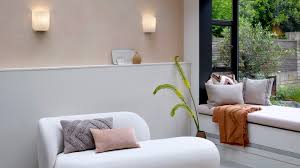Interior design has always been about finding the perfect balance between functionality and elegance. One feature that has stood the test of time in achieving this harmony is the dado rail. Often seen as a subtle detail, it carries a significant role in shaping the character of a space. Far from being just a decorative element, a dado rail adds both refinement and practical value to interiors, making it a favored choice for those who wish to blend tradition with contemporary appeal.
The origins of the dado rail can be traced back to classical architecture, where it was primarily introduced as a protective feature for walls. Positioned midway between the floor and ceiling, it safeguarded plaster from furniture damage and everyday scuffs. Over time, its function evolved into an aesthetic element, enriching walls with depth and proportion. Today, it continues to serve both purposes, offering durability while also bringing a timeless quality to modern homes.
What makes the dado rail especially effective is its ability to enhance proportions within a room. By visually dividing a wall, it creates balance and structure, preventing large surfaces from appearing too flat or overwhelming. This architectural line naturally guides the eye, adding dimension and symmetry without requiring elaborate ornamentation. When paired with paint or wallpaper in contrasting tones above and below the rail, it introduces visual interest and a sense of order that instantly elevates the design.
Another benefit lies in the versatility of the dado rail. It complements a variety of styles, from classic interiors filled with period detailing to sleek modern spaces that embrace minimalism. In traditional settings, it reinforces heritage charm by connecting seamlessly with paneling or mouldings. In contemporary homes, it can be used as a subtle divider that introduces definition without clutter. Its adaptability ensures it remains relevant across changing trends, proving its worth as a timeless design element.
The placement of a dado rail also offers creative freedom. While the traditional height sits around one-third of the wall, modern interpretations allow flexibility depending on the effect desired. Lower rails can emphasize spaciousness, while higher ones can highlight verticality and make ceilings feel taller. This flexibility provides homeowners and designers with the opportunity to experiment and customize according to the unique character of each room.
Beyond aesthetics, practicality continues to play a role in its enduring popularity. In areas such as hallways, dining rooms, or living spaces where walls are prone to wear, dado rails act as a protective feature. When combined with durable wall finishes below the rail, they help maintain a clean and polished appearance, even in high-traffic areas.
Ultimately, the presence of a dado rail enriches interiors with a sense of heritage while allowing for modern creativity. Its ability to transform plain walls into visually engaging surfaces demonstrates its lasting appeal. By merging elegance with functionality, this classic feature proves that thoughtful detailing can define the atmosphere of a space. Whether in a contemporary apartment or a period home, the dado rail remains an enduring touch that enhances the art of interior design.


